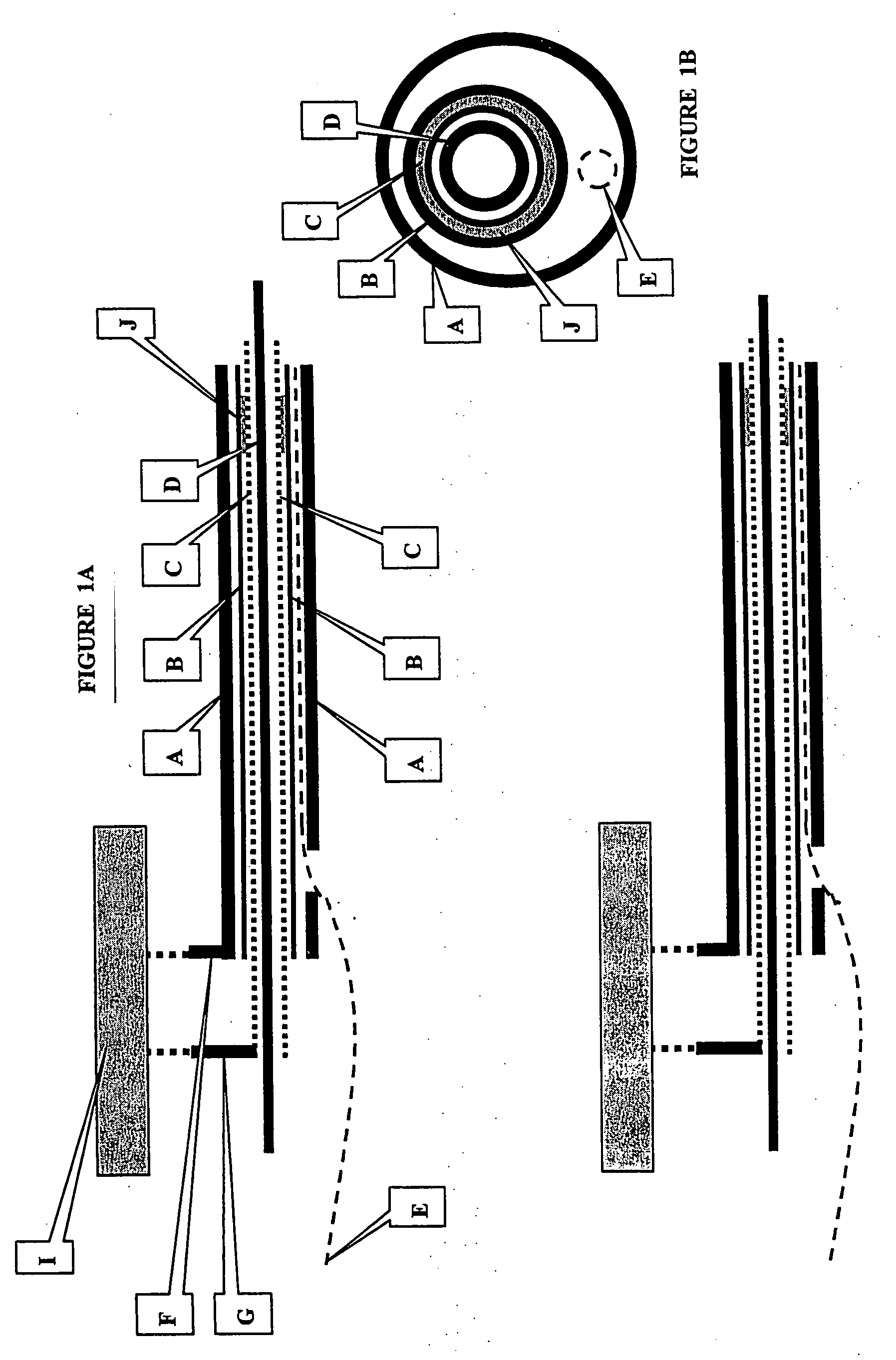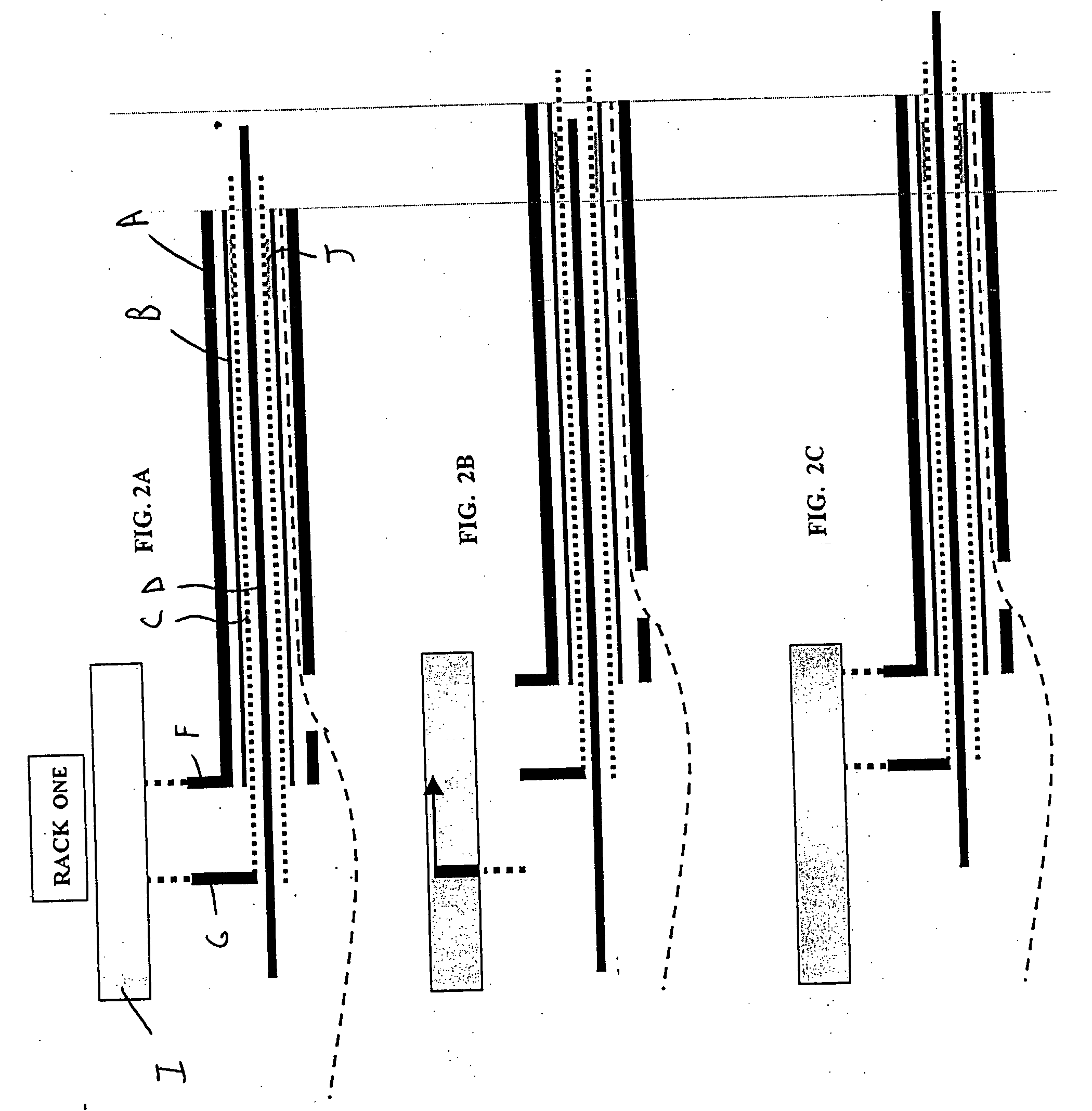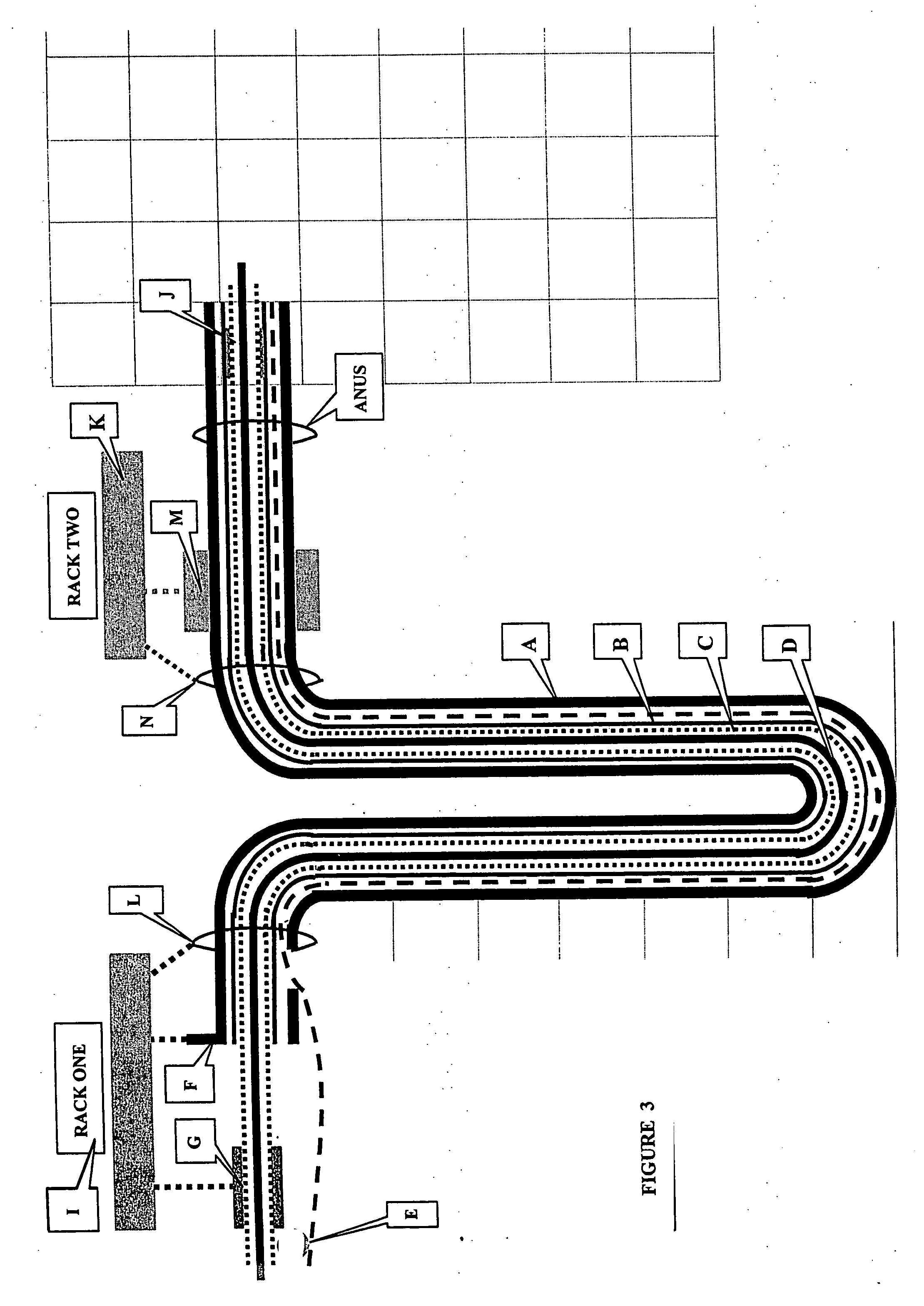Automated self-propelling endoscope
a self-propelling endoscope and automatic technology, applied in the field of self-propelling endoscopes, can solve the problems of long time that is required to examine the full length of the colon, the walls of the colon often fail to direct and guide the scope, and the obstruction of colonoscopy
- Summary
- Abstract
- Description
- Claims
- Application Information
AI Technical Summary
Benefits of technology
Problems solved by technology
Method used
Image
Examples
Embodiment Construction
and Functions of Rack One and Rack Two for Propelling the Eendoscope Forward
[0054] FIG. 3 depicts Rack One and Rack Two at the beginning of a propelling cycle. Rack One sits upon and is strongly fastened to a platform or table located adjacent to the proximal end of the endoscope. It has two potential coupling mechanisms, each designated by a dotted line when active. In FIG. 3, the vertical line attached to the coupling of the proximal end of the obturator channel F establishes a fixed and stable location for it; the proximal end of the obturator channel does not change its location during the entire operation of the automated propelling operation. This stability is enhanced by a similar firm coupling to rigid ring L through which the scope passes. Beyond the ring L is the loop that consists of the major length of the endoscope. The coupling mechanism at point G, including a pair of clamps, holds the EXT-obturator stationary with respect to Rack One I.
[0055] Electrical motors of Rac...
PUM
 Login to View More
Login to View More Abstract
Description
Claims
Application Information
 Login to View More
Login to View More - R&D
- Intellectual Property
- Life Sciences
- Materials
- Tech Scout
- Unparalleled Data Quality
- Higher Quality Content
- 60% Fewer Hallucinations
Browse by: Latest US Patents, China's latest patents, Technical Efficacy Thesaurus, Application Domain, Technology Topic, Popular Technical Reports.
© 2025 PatSnap. All rights reserved.Legal|Privacy policy|Modern Slavery Act Transparency Statement|Sitemap|About US| Contact US: help@patsnap.com



